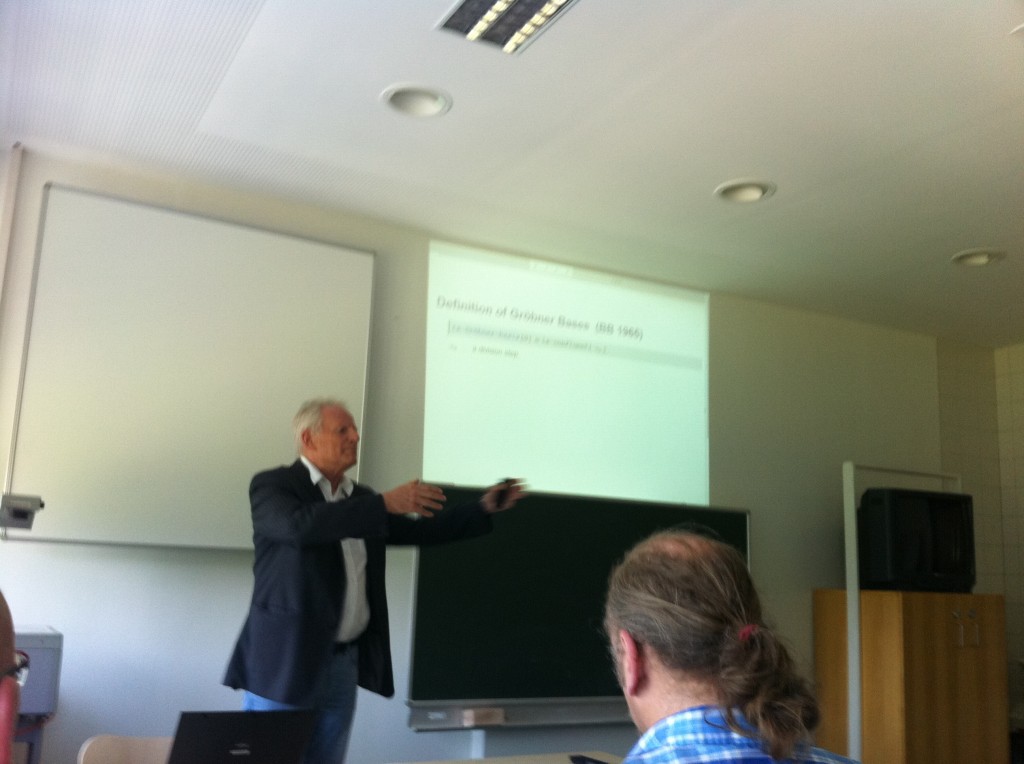Abstract: Recent large scale disasters have awaken governments at home and abroad to their needs for preparedness to support public safety and performance of cyber-systems assisting first responders (FR). First responders of various agencies are often on the frontline to assist in managing these events to protect lives and property. The effectiveness of their mission is highly dependent on capability of mobile wireless systems available at incident scenes, especially how their mobile infrastructure and devices can assist in real-time FR connectivity and location tracking, and protect against threads and vulnerabilities in an integrated manner.
The talk presents challenges to achieve such integration when taking into account resource limitations in mobile systems, mission-orientation of first responders, and possible threats and safety problems at incident scenes. We will amplify these challenges on two examples: (a) reliable relay placement for FR communication in high-rises, and (b) alert mechanisms if threats are detected. In case of the reliable relay placement, we will examine placement of relays to communicate reliably with base stations via polymorphic networks. In case of alert mechanisms we will discuss solutions such as Mobi-Herald and examine it against resource limitations and possible threats.
We will conclude the talk with a short overview of other research projects that are going on in the Mobile Networking and Operating System (MONET) group at the University of Illinois.
Here are some pictures from Klara’s visit and the slides of the talk.
Short Bio: Klara Nahrstedt is a full professor at the University of Illinois at Urbana-Champaign, Computer Science Department. Her research interests are directed toward multimedia systems, quality of service (QoS) management in mobile networks, QoS routing, QoS-aware resource management, Quality of Protection (QoP) in multimedia systems, and real-time security in mission-critical systems. She is the coauthor of widely used multimedia books `Multimedia: Computing, Communications and Applications’ published by Prentice Hall, and ‘Multimedia Systems’ published by Springer Verlag. She is the recipient of the IEEE Communication Society Leonard Abraham Award for Research Achievements, Ralph and Catherine Fisher Professor, IEEE Fellow, University Scholar, Humboldt Fellow, and the Chair of SIG Multimedia. She was the general chair of ACM Multimedia 2006, general chair of ACM NOSSDAV 2007 and the general chair of IEEE Percom 2009. Klara Nahrstedt received her BA in mathematics from Humboldt University, Berlin, in 1984, and M.Sc. degree in numerical analysis from the same university in 1985. In 1995 she received her PhD from the University of Pennsylvania in the Department of Computer and Information Science. She is the member of ACM and IEEE Fellow.
 With the growing amount of images, videos, and music, the task to support users in exploring multimedia databases is of ever-increasing importance. That is why numerous content-based browsing approaches have been developed. They support users in searching and browsing for multimedia objects in an interactive and playful way. In terms of query performance, however, these browsing approaches are frequently limited to small-to-moderate size databases. The question of how to efficiently browse large-scale multimedia databases yet remains to be answered.
With the growing amount of images, videos, and music, the task to support users in exploring multimedia databases is of ever-increasing importance. That is why numerous content-based browsing approaches have been developed. They support users in searching and browsing for multimedia objects in an interactive and playful way. In terms of query performance, however, these browsing approaches are frequently limited to small-to-moderate size databases. The question of how to efficiently browse large-scale multimedia databases yet remains to be answered.
 Kurzfassung:
Kurzfassung: Aus Anlass der
Aus Anlass der  The analysis of large wireless systems relies on a spatial model
The analysis of large wireless systems relies on a spatial model ABSTRACT
ABSTRACT
